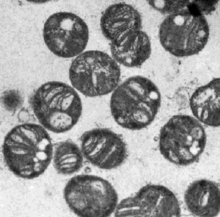- Methylococcaceae
-
Methylococcaceae 
Methylococcus capsulatus Scientific classification Kingdom: Bacteria Phylum: Proteobacteria Class: Gamma Proteobacteria Order: Methylococcales Family: Methylococcaceae Genera Methylomonas
Methylobacter
Methylococcus
Methylomicrobium
Methylosphaera
MethylocaldumThe Methylococcaceae are a family of bacteria that obtain their carbon and energy from methane, called methanotrophs. They comprise the type I methanotrophs, in contrast to the Methylocystaceae or type II methanotrophs. They belong among the gamma subdivision of the Proteobacteria, and are typically given their own order.
The Methylococcaceae have internal membranes in the form of flattened discs, perpendicular to the cell wall. Methane is oxidized to give formaldehyde, which is fixed by a process called the RuMP cycle. Here formaldehyde is combined with the sugar ribulose, producing hexulose. This in turn is broken down to produce glyceraldehyde, which is used to produce new ribulose and other organic compounds. Catabolism does not involve a complete citric acid cycle.

This Proteobacteria-related article is a stub. You can help Wikipedia by expanding it.
